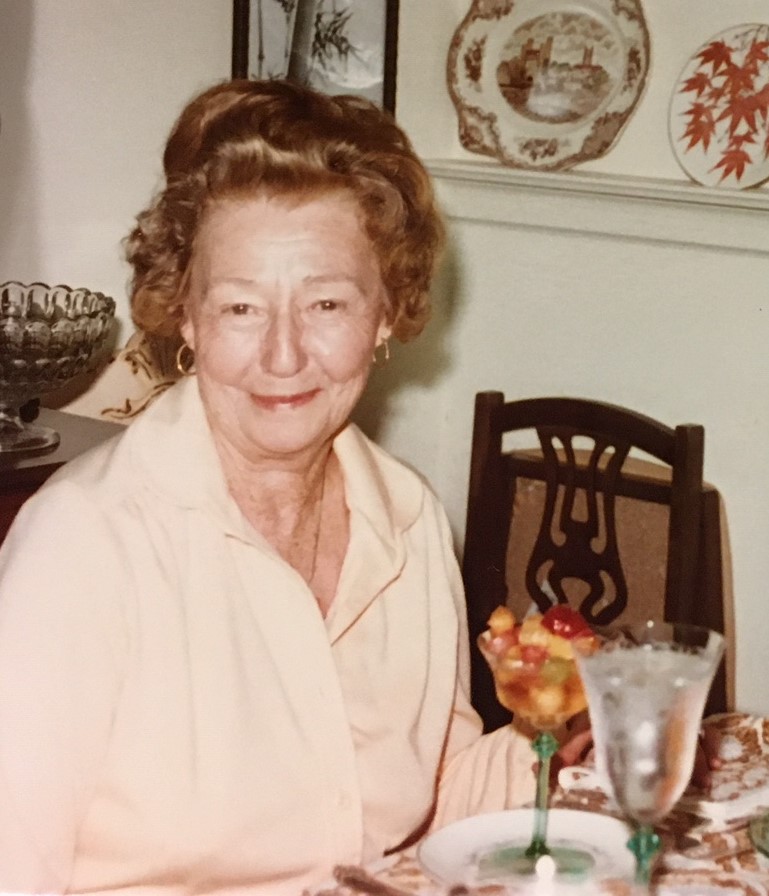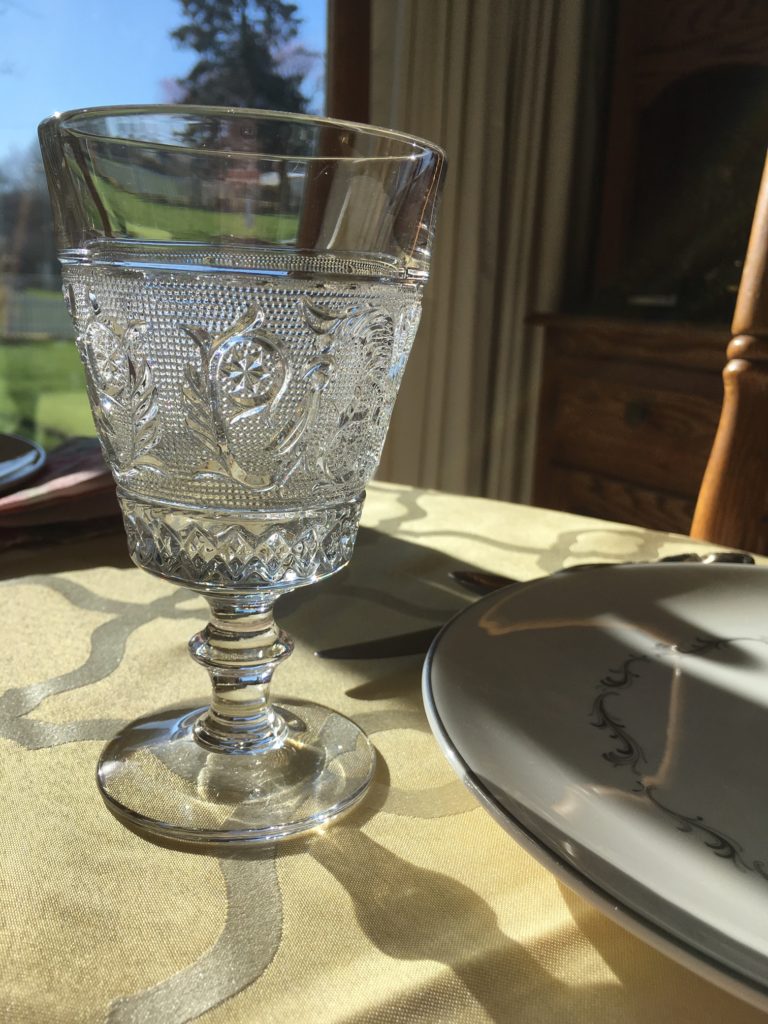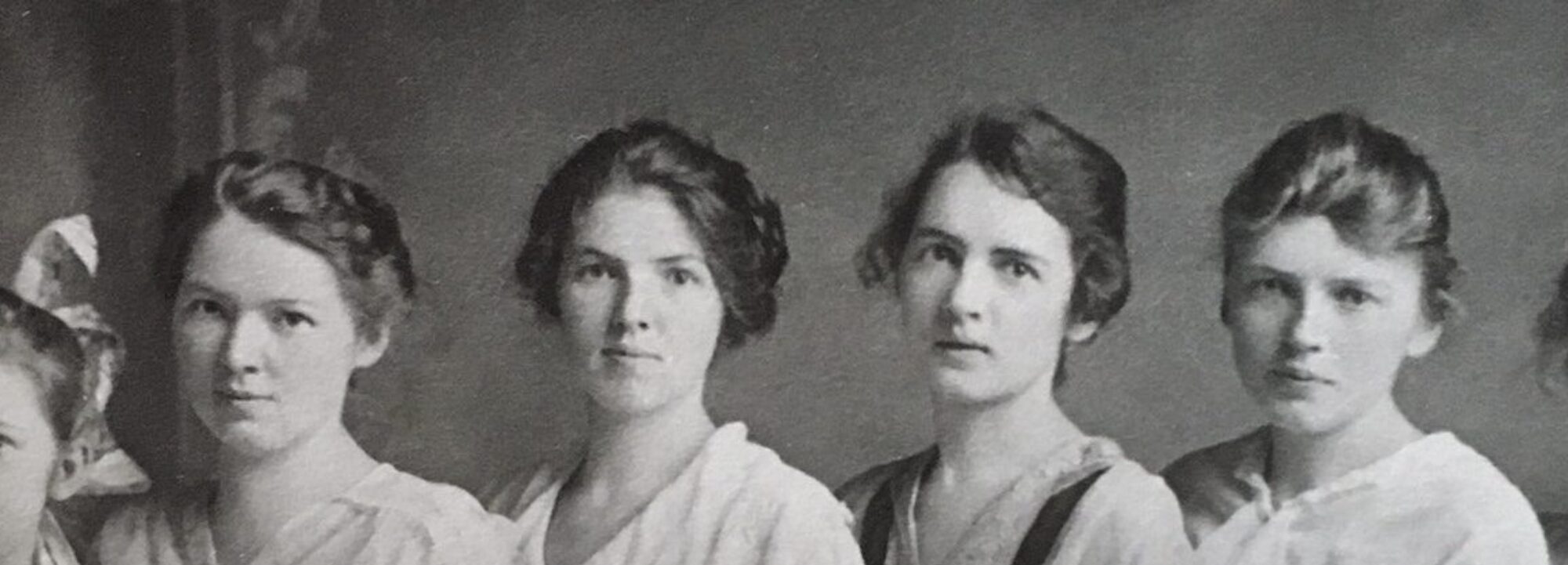
I do love to set a table—to use special pieces from my family’s history, to polish the glassware, to arrange a fresh bouquet. I love the feel of these old treasures—the gloss of my parents’ wedding china, the raised pattern on my grandmother’s pressed glass, the textures of vintage tablecloths and napkins.

Our buffet is filled with random bits of my family’s generational ware, and each time I set the table with these icons of the past, or wash them gently after a special dinner with friends, or store them carefully for the next gathering, they remind me of my people and the hands that touched them. I imagine the stories these dishes could tell.
When we were growing up, teenage girls had things called “hope chests,” trunks or nice wooden boxes which held objects to be used when we set-up housekeeping someday. When I was a teen, I had an old metal trunk which held a tissue-wrapped set of my Great Aunt Ethel’s china and a few pieces of Depression Glass.

This custom has changed, and while some of our children do get married, many do not. But those chests did serve a purpose, as most of our children eventually leave home and need many household things.
What families today use are Rubbermaid Totes instead of cedar chests—a place for parents to toss extra dish towels, the pots and pans that work their way to the backs of crowded kitchen cupboards, that old coffee maker that still works, and maybe a waffle iron which never made its way out of the box.

My husband and I selected our dishes and various housewares several months before our June wedding. I was so very excited as we entered Gilmore’s and met briefly with a salesclerk. She gave us a clipboard and off we went–me glowing in excitement and my husband-to-be checking his watch and growing more and more impatient by the moment. This is a guy whose refrigerator contained four items: eggs, cheese, bread, and milk. He used one plate at a time, washed it, and put it away. Setting the perfect table was not even on his distant horizon. He didn’t care, and he has never found it important.

Nearly forty years later, we still use the dishes we picked out that day: “Matchmaker” by Noritake. Most of the plates have survived three kids, two grandkids, regular family meals, and countless loads through the dishwasher. Most of the bowls didn’t make it, but the chipped ones that remain remember fondly the servings of steamy oatmeal, thick stews, and hot fudge sundaes.
These dishes have been with us through our seasons: they were charming in the early spring of our marriage; they were reliable during the joyful summer season of child rearing, little league games, and homework around the table; and they are thankful and gracious in our autumn.
And despite the fading colors and imperfections, these dishes–and this life journey–is still the pattern I would choose today.
It’s a Fine Life
By Kathleen Oswalt-Forsythe © February 6, 2020

‘Just spotted this as I’m looking at moving from our home (for the first time in 30 years) and packing up our Noritake Matchmaker dishes. We have the full set, still–but we only had two kids so perhaps that explains the difference between your family and ours in what’s left! We chose ours before our 1980 wedding. Thanks to generous family members, we even have the accessory pieces: A turkey platter that’s held innumerable turkey and non-turkey holiday family feasts, the stemmed glasses (great for applesauce with those pork chop dinners) and even the matching silverware (the china handles are the pattern ). A microwave wasn’t in our home in those days, but when we chose these lovely and homey dishes we knew that some day, when we could afford one, these dishes could go in there to zap and reheat our meals. I was considering “off loading” the set before I read your reflections, but, well, now I’m not sure… 😀